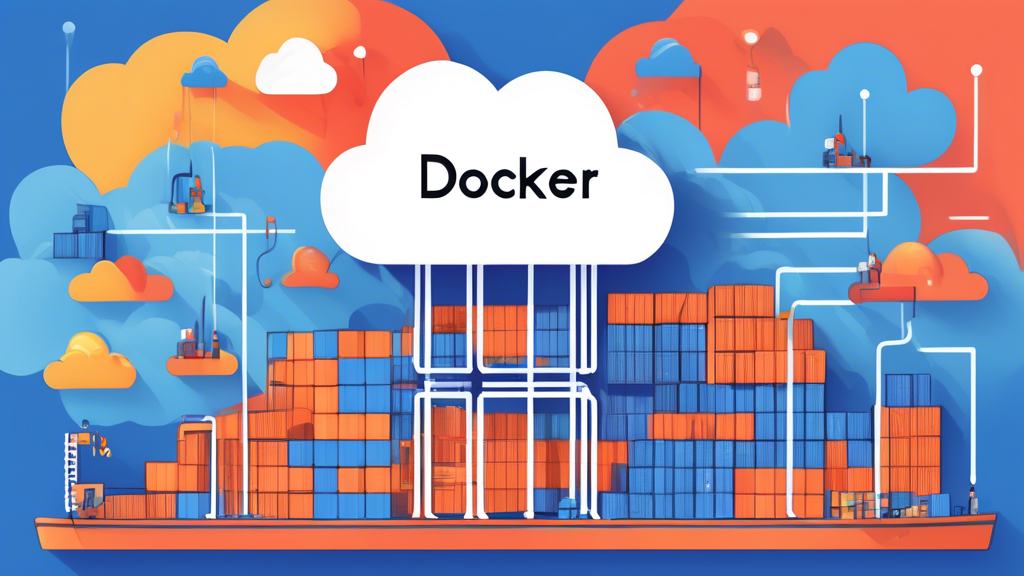Introduction
Imagine embarking on a journey to the cloud, and not just any cloud, but one that’s part of the Google ecosystem. If that sounds exciting, then you’re in the right place! Deploying Docker containers on Google Cloud is like setting sail in vast, open waters with the wind in your sails. But fear not, you won’t be navigating these waters alone. This article is your compass, guiding you step by step through the process of deploying Docker containers on Google Cloud, ensuring a smooth sail from start to finish. So, buckle up, and let’s dive right into the heart of cloud computing!
Understanding the Basics
Before we set sail, let’s get our bearings right. Docker is an open platform for developing, shipping, and running applications in containers. These containers allow you to package up your application with all of its dependencies into a single unit, ensuring it runs smoothly in any environment. Google Cloud, on the other hand, offers a mighty and scalable platform for deploying these containerized applications, making it a popular choice for developers.
Setting up Your Google Cloud Environment
First things first, you need to have a Google Cloud account. If you don’t have one yet, it’s like showing up to a pool party without a swimsuit – not a good start. Head over to the Google Cloud website and sign up. Once you’re in, here’s how you set up your environment:
- Create a new project in the Google Cloud Console.
- Enable the Google Kubernetes Engine (GKE) and Container Registry APIs for your project.
- Install and initialize the Google Cloud SDK on your local machine.
- Get familiar with the Google Cloud Shell, a command-line interface for managing your cloud resources directly from the browser.
Containerizing Your Application
No Docker journey can begin without a Dockerized application. Here’s a simplified process to get your app ready for the cloud:
- Install Docker on your local machine if you haven’t already.
- Create a Dockerfile in the root of your application directory. This file contains all the commands needed to assemble your application’s Docker image.
- Run
docker buildto create the Docker image of your application. - Once the image is built, you can test it locally using
docker run.
Remember, a Docker image without a whale logo is like a pirate ship without a flag – it just doesn’t feel right. Just kidding, but seriously, Docker’s whale logo is pretty cool.
Pushing Your Docker Image to Google Container Registry
Now that you have your Docker image ready, it’s time to push it to the Google Container Registry (GCR), a secure and private registry for your Docker images. Here’s how:
- Tag your Docker image with the URL of your GCR.
- Authenticate your Docker client with Google Cloud.
- Push the image using
docker push.
This process is akin to sending out invitations to your app’s grand debut on Google Cloud.
Deploying Your Docker Container on Google Kubernetes Engine
The stage is set, and now it’s time for the main event – deploying your container on Google Kubernetes Engine (GKE), a managed environment for running containerized applications.
- First, you need to create a GKE cluster. Think of this as assembling your crew before setting sail.
- Once your cluster is ready, configure kubectl (the Kubernetes command-line tool) to communicate with your cluster.
- Deploy your app to the cluster using kubectl, specifying your Docker image hosted in GCR.
- Expose your application to the internet (if desired) by creating a Kubernetes service.
Voilà, your application is now sailing smoothly on Google Cloud’s open seas!
Conclusion
Congratulations! You’ve successfully navigated through the process of deploying Docker containers on Google Cloud. From setting up your Google Cloud environment and containerizing your application to pushing your Docker image to Google Container Registry and deploying it on Google Kubernetes Engine, you’ve mastered the basics of cloud deployment. Remember, this journey is just the beginning. Google Cloud offers a vast horizon of possibilities for optimizing, scaling, and managing your containerized applications.
Cap Off Your Voyage with a Visit to StarMetaverseGeorgia
Now that your app is smoothly sailing on Google Cloud, it’s time to think about further adventures. Whether it’s web development, cloud strategies, or general tech wizardry, StarMetaverseGeorgia.com is your port of call for all web development needs. With a crew of experienced professionals, we’re here to help you navigate the vast seas of technology. Drop anchor at StarMetaverseGeorgia.com and let us chart a course to your success!

Comments are closed